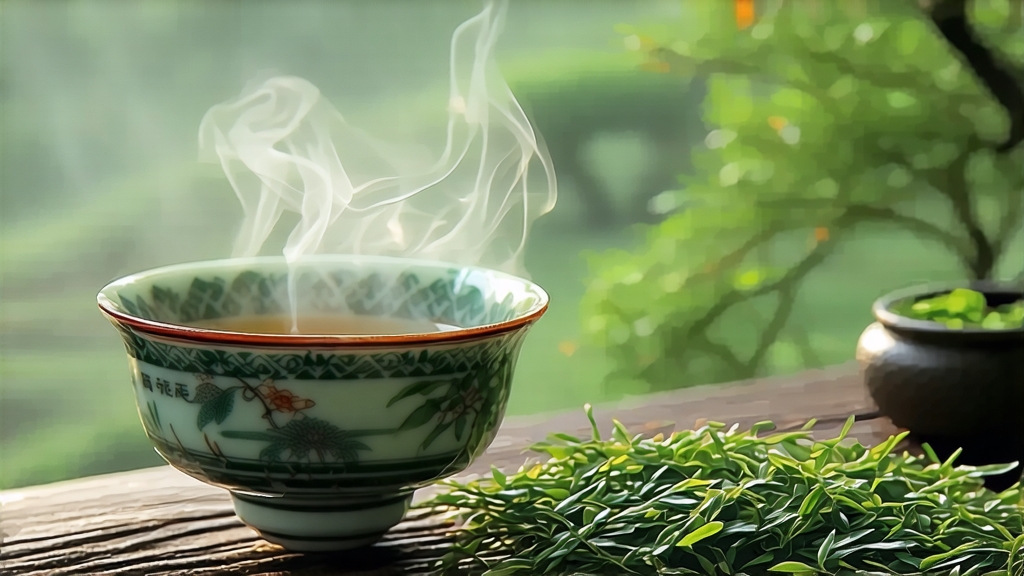
Tucked into the Tropic of Cancer, where the Philippine Sea’s warm breath collides with the granite spine of Taiwan’s central ranges, Alishan High-Mountain Oolong (阿里山高山烏龍) emerges each spring from a realm that Chinese poets once called “the staircase to the moon.” At elevations between 1,000 and 1,400 m, the tea gardens sit above the daily cloud line; for several hours every afternoon the plants are bathed in drifting mist that acts like a natural shade-cloth, slowing photosynthesis and coaxing the leaves to stockpile amino acids, geraniol, and a singular alpine sweetness. The result is a liquor that tastes less like the stereotypical “tea” and more like sipping the mountain itself—orchid, alpine air, and a cool mineral snap that lingers like the echo of a temple bell.
Historical roots
Oolong’s larger story begins in Fujian during the Ming-Qing transition, when partial oxidation was discovered as a bridge between green and black teas. Yet Alishan’s cultivar is a twentieth-century child of diaspora. In 1895 the Treaty of Shimonoseki ceded Taiwan to Japan; colonial agronomists, hungry for export revenue, imported Qingxin Oolong (青心烏龍) cuttings from Fujian’s Wuyi and Anxi counties. The Japanese planted them experimentally on Alishan’s lower slopes, but it was not until the 1979 “High-Mountain Tea Craze” that indigenous Tsou farmers, armed with post-war Taiwanese capital, pushed the gardens toward the summit. By 1985 Alishan Oolong had outpriced Tieguanyin on Taipei auction floors, and its name became shorthand for the island’s entire high-mountain category.
Cultivar & terroir
The dominant cultivar remains Qingxin Oolong, a slow-growing bush with small, serrated leaves that fold inward like a dove’s wing. On Alishan’s acidic laterite soils—rich in iron and magnesium—the plant develops a signature “high-mountain rhyme” (高山韻): a kinetic tension between sucrose sweetness and flinty astringency. Diurnal swings of 15 °C are routine; at night thermometers can dip to 8 °C even in May, locking fragrance into the leaf. Farmers time the spring plucking for the brief window after the last frost but before the monsoon, when the shoots are still velvet-soft and the bud-to-leaf ratio is exactly 1:2.
Pluck & withering
At dawn, pickers wearing LED headlamps ascend the terraces in single file, harvesting only the “small open face” standard: the terminal bud plus the next two leaves, each no longer than 2.5 cm. Within minutes the baskets are shuttled to the on-mountain factory, where the leaves are spread on bamboo trays under the mountain’s own breeze. The first withering lasts 90 minutes; every 15 minutes a master “shake-wakes” the leaves—lifting the trays and giving them a gentle hip-driven shimmy that bruises the edges just enough to trigger oxidation enzymes. The goal is to coax the leaf to “speak,” evidenced by a faint whisper of grass transitioning into white peach.
Oxidation choreography
Unlike lowland oolongs that may oxidize 50–60 %, Alishan is restrained at 20–25 %, preserving its emerald heart. The leaves are tumbled inside a cylindrical bamboo drum rotating at 8 rpm for six cycles; between each cycle they rest in deep wicker baskets, exhaling moisture and inhaling altitude-cooled oxygen. Aroma cues guide the tea master: when the ambient scent shifts from cut cucumber to ripe apricot, oxidation is arrested.
Kill-green & shaping
A 260 °C electric wok provides the “kill-green” shock, deactivating enzymes in 3 minutes. While still pliable, the leaves are wrapped in cotton cloth bundles the size of a softball and sent to the rolling machine—two motorized granite slabs that press and rotate 45 times per minute for 7 minutes. This repeated bundle-rolling-bunroll cycle compresses cell sap to the surface while locking in the tight, pearl-like shape that will later unfurl like a time-lapse lily. Finally, a low-temperature bake (90 °C for 2 hours) reduces moisture to 4 %, readying the tea for market. Some lots undergo an additional charcoal finish: three consecutive nights over longan-wood embers at 60 °C, imparting a whisper of smoked honey